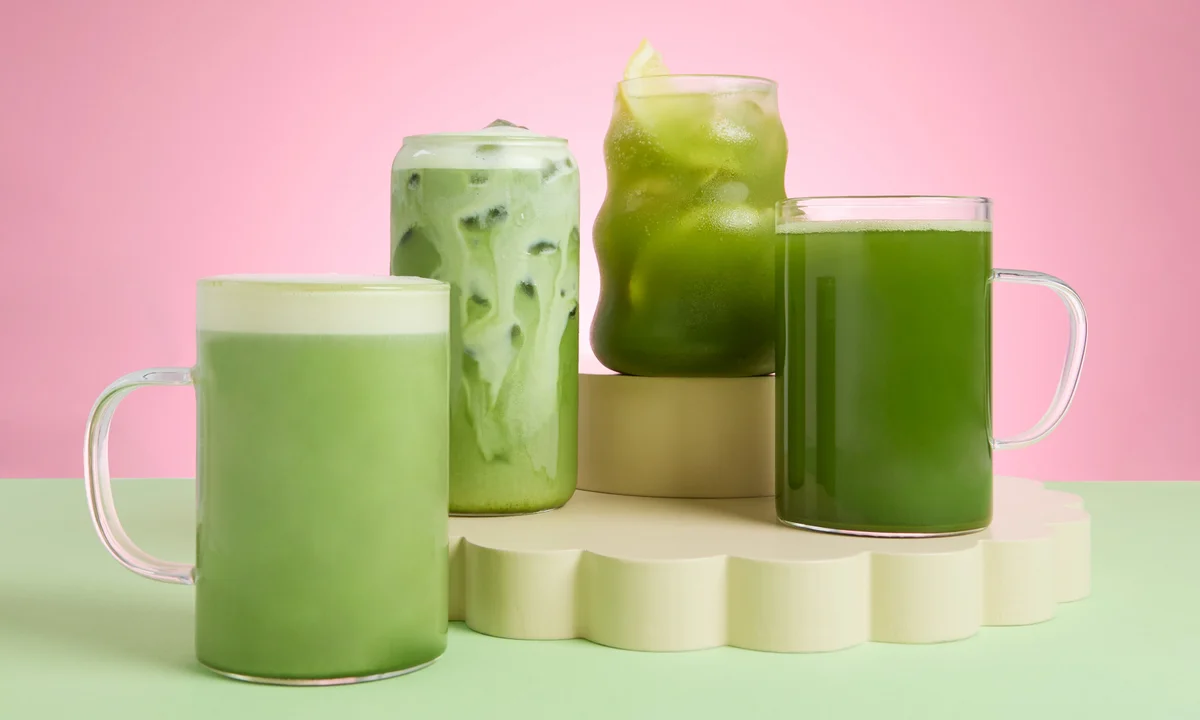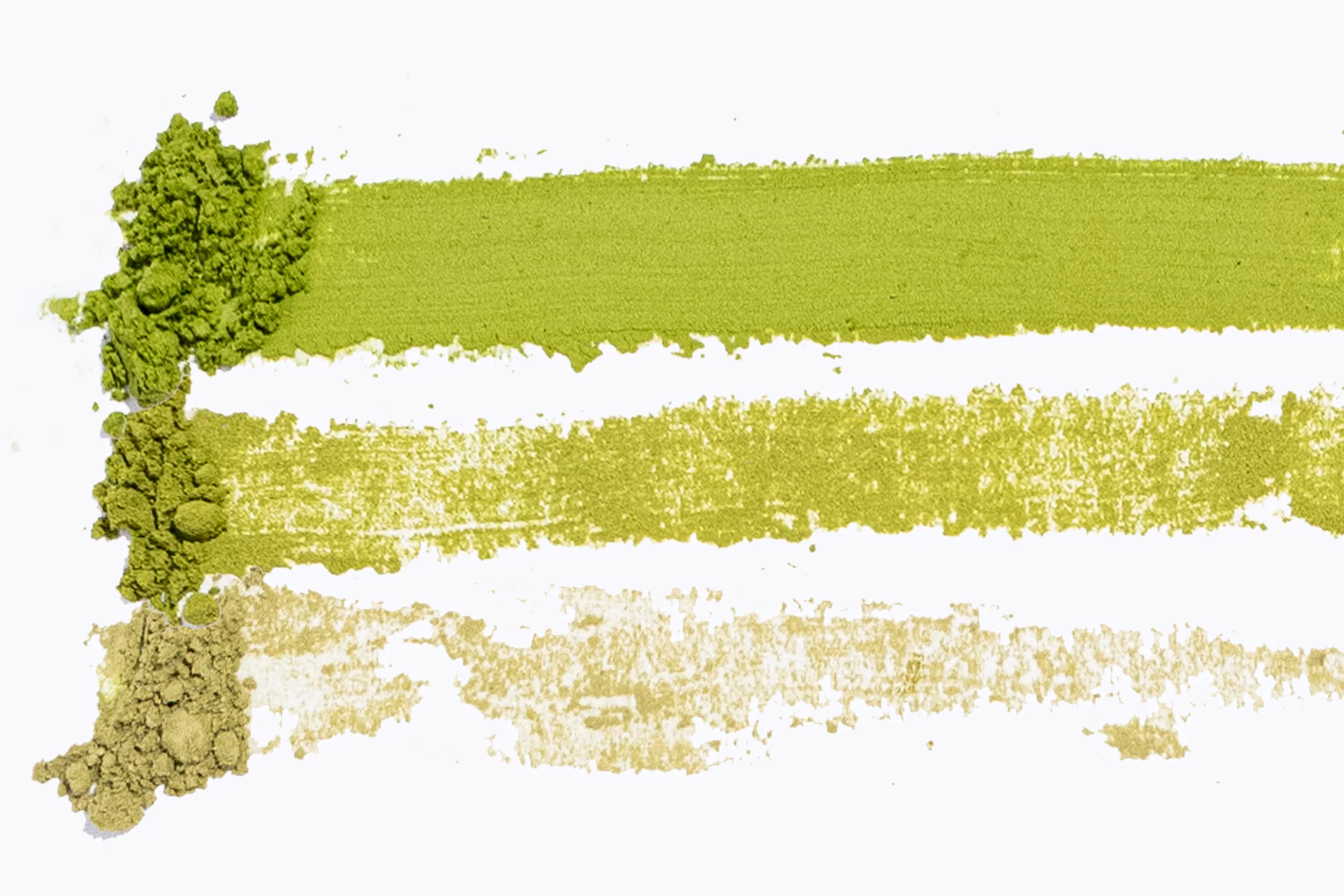¿Está cansado del ritual diario del café que acaba en un estrepitoso bajón? Ese ciclo familiar de una sacudida matutina, seguida de nerviosismo vespertino, ansiedad y un inevitable bajón de energía. Si busca una forma más sana y equilibrada de concentrarse y obtener energía, ha llegado el momento de descubrir el mundo del matcha.
Este vibrante polvo verde es algo más que una bebida de moda en los cafés; es una tradición centenaria repleta de beneficios para la mente y el cuerpo modernos. Pero adentrarse en el mundo del matcha puede resultar confuso. ¿Qué significan "ceremonial" y "culinario"? ¿Por qué algunos polvos son de un verde brillante y otros de un amarillo apagado? Y con innumerables marcas compitiendo por su atención, ¿cómo elegir una que realmente valga su dinero?
Considere esta su guía definitiva. Desmitificaremos las etiquetas, le enseñaremos a detectar la verdadera calidad y le ofreceremos nuestros polvos de matcha más recomendados para cada propósito y presupuesto. Despídete de los remordimientos del comprador y da la bienvenida a tu taza perfecta de energía tranquila y concentrada.

¿Por qué elegir matcha? Más que una bebida verde
Antes de sumergirnos en las marcas y los grados, exploremos por qué El matcha está conquistando los corazones de muchos antiguos amantes del café. La magia reside en su composición química única, que ofrece una experiencia profundamente diferente.
Un estado de "calma-alerta": La magia de la L-teanina y la cafeína
Aunque el matcha contiene cafeína, actúa en sinergia con un raro y potente aminoácido llamado L-teanina. Piense en ellos como los socios perfectos.
- Cafeína proporciona la chispa de la energía y el estado de alerta.
- L-teanina favorece la relajación y la claridad mental, suavizando los bordes afilados de la cafeína.
El resultado no es el zumbido frenético y nervioso de un espresso. En su lugar, el matcha proporciona un estado de calma-alerta. Es un estímulo suave y sostenido que permite concentrarse sin ansiedad ni el temido bajón post-cafeína. Es la sensación de estar energizado y sereno a la vez, un estado de flujo en una taza, históricamente apreciado por los monjes zen para la meditación.
Repleto de antioxidantes para su bienestar
El matcha se elabora a partir de hojas de té enteras molidas a la piedra, lo que significa que se consumen 100% de los nutrientes de la hoja. Esto lo convierte en una fuente de antioxidantes. Es especialmente rico en un tipo de catequina llamada EGCG (galato de epigalocatequina)que es famoso por su potencial para combatir el daño celular y favorecer la salud en general. Aunque una sola taza no cambiará tu vida de la noche a la mañana, incorporar matcha a tu rutina es una forma sencilla y deliciosa de aumentar las defensas de tu organismo.
La elección más importante: Matcha ceremonial vs. Matcha culinario
Este es el punto de confusión más común para los recién llegados, pero la distinción es sencilla una vez que se comprende su propósito. Elegir el grado adecuado para el uso previsto es el paso más importante para disfrutar de una gran experiencia con el matcha.
Lo hemos desglosado en esta sencilla tabla:
| Característica | Grado Ceremonial | Grado culinario |
|---|---|---|
| Lo mejor para | Beber solo con agua (Usucha/Koicha) | Lattes, batidos, repostería y otras recetas |
| Pruebe | Delicado, naturalmente dulce, rico en "umami". | Más audaz, más robusto, ligeramente amargo (para resistir a otros ingredientes) |
| Color | Verde eléctrico vibrante | Más apagado, a menudo amarillento o marrón verdoso |
| Textura | Polvo ultrafino y sedoso | Bien, pero no tan delicado como el ceremonial |
| Precio | Más alto | Baja |
El resultado final: Si desea saborear el matcha en su forma más pura, prepárelo tradicionalmente con agua caliente, invertir en Grado Ceremonial. Sus notas delicadas, dulces y sabrosas (umami) se disfrutan sin leche ni azúcar. Si te dedicas principalmente a preparar cafés con leche matcha, batidos u hornear, Culinary Grade es la elección inteligente y rentable. Su perfil de sabor más intenso está diseñado para destacar entre los demás ingredientes.

Cómo lo recomendamos: 5 señales de un polvo de matcha de alta calidad
Para elaborar nuestra lista de recomendaciones, hemos utilizado un estricto conjunto de criterios que separan lo excepcional de lo mediocre. Puedes utilizar estas mismas cinco señales para convertirte en un experto comprador de matcha.
1. Origen: Busque Japón (especialmente Uji)
Aunque el matcha se produce en otros lugares, Japón sigue siendo el patrón oro en cuanto a calidad, tradición y experiencia. La página Región de UjiA las afueras de Kioto, es la cuna histórica del matcha y goza de fama universal por producir los mejores polvos del mundo, gracias a su clima ideal, su suelo fértil y siglos de técnicas de cultivo perfeccionadas.

2. Color: un verde eléctrico y vibrante es la clave
El color de matcha en polvo es un indicador directo de su calidad. El matcha de mayor calidad, elaborado a partir de las hojas más jóvenes, tiernas y cultivadas a la sombra, posee un verde brillante, casi eléctrico. Esto indica un alto contenido en clorofila y L-teanina. Evite los polvos opacos, amarillentos o parduscos, ya que indican hojas de baja calidad, oxidación o almacenamiento inadecuado.
3. Sabor y aroma: dulce, herbáceo y lleno de umami
Abra la lata. Un buen matcha debe oler fresco, dulce y ligeramente herbáceo, como un exuberante campo primaveral. El sabor es donde el matcha de primera calidad brilla de verdad. Debe ser suave, con un perfil de sabor complejo que incluya un toque de dulzor natural y una nota profunda y sabrosa conocida como umami. Este sabor rico y caldoso es el sello distintivo del té de alta calidad cultivado a la sombra. Si su matcha tiene un sabor abrumadoramente amargo, es probable que sea un producto de baja calidad.
4. Textura: Fina, sedosa y sin grumos
El matcha de alta calidad se muele a la piedra hasta obtener un polvo increíblemente fino y sedoso, con una consistencia similar a la del talco o la sombra de ojos. Esta fina molienda le permite suspenderse perfectamente en el agua, creando una bebida suave y sin grumos.
5. Espuma: Crea una espuma rica y cremosa
Cuando se bate correctamente, un buen matcha ceremonial producirá una capa espesa y cremosa de pequeñas burbujas, conocida como espuma o "crema". Esto no sólo mejora la textura y la sensación en boca, sino que también es un signo de la calidad y frescura del polvo.
Nuestros polvos de matcha más recomendados para cada necesidad
Tras una exhaustiva investigación basada en nuestros criterios de calidad, aquí tiene nuestras principales recomendaciones. Hemos seleccionado marcas reales bien consideradas para que representen lo mejor de cada categoría y le ayuden a encontrar el producto perfecto para sus necesidades.
Mejor clasificación general de ceremonias: Ippodo Sayaka Matcha
Para los puristas que buscan la experiencia matcha definitiva, aquí la tienen. Ippodo, una empresa de té de Kioto con más de 300 años de historia, elabora su mezcla Sayaka a partir de las hojas de primera cosecha cultivadas en Uji. Se convierte en un vibrante licor verde con una crema sedosa. El sabor es suave y estratificado, con un profundo umami, un sutil dulzor y ningún amargor áspero. Es una inversión que le recompensará con cada taza.
Lo mejor para un Matcha Latte perfecto: Golde Matcha puro
Específicamente elaborado para un uso versátil, este polvo de Matcha Puro es perfecto para crear cafés con leche de calidad en casa. Es lo suficientemente fuerte como para brillar a través de la leche, ya sea láctea o vegetal, pero lo suficientemente suave como para evitar cualquier astringencia. Espere un rico y clásico sabor a matcha y un verde siempre brillante. color en tu café con leche siempre.
Lo mejor para repostería y creaciones culinarias: Navitas Culinary Matcha
Cuando necesite un matcha fiable para sus recetas, Navitas Matcha culinario de Organics proporciona. Este polvo orgánico de grado culinario ofrece un sabor robusto y un color verde intenso que se mantiene bien en productos horneados, batidos e incluso salsas saladas. Más asequible que los grados ceremoniales, le permite ser generoso en su cocina sin gastar de más, al tiempo que ofrece la auténtica esencia matcha.
La mejor opción ecológica: Encha Organic Ceremonial Grade
Para los que dan prioridad a los certificados matcha ecológicoEncha cuenta con las certificaciones USDA Organic y Japan JAS. Procedente de granjas de Uji, ofrece un sabor limpio y vibrante con notas vegetales equilibradas y un suave dulzor. Aunque ligeramente menos complejo que los grados ceremoniales ultrapremium, es ideal para beber a diario con tranquilidad.
El mejor matcha económico para empezar: Naoki Matcha Superior Blend
Si es nuevo en el mundo del matcha y quiere empezar sin hacer una gran inversión, la Mezcla Superior de Naoki es una excelente elección. Elaborado a partir de hojas de primera cosecha en Uji, ofrece un sabor suave y dulce con un bajo amargor, poco habitual por su precio. Es una fantástica entrada en el mundo del matcha de calidad sin tener que pagar un precio elevado.
Cómo preparar tu primer tazón perfecto de matcha
No deje que las herramientas tradicionales le intimiden. Preparar un bonito cuenco de matcha es sencillo y te garantiza obtener el mejor sabor posible de tu polvo.
- Tamizar el polvo. Vierta 1-2 cucharaditas de polvo de matcha (unos 2 gramos) y páselo por un colador pequeño de malla fina. Este paso crucial rompe los grumos y garantiza una textura suave como la seda.
- Añada agua caliente (no hirviendo). Vierta unos 60-90 ml de agua caliente sobre el polvo. La temperatura ideal es alrededor de 175°F / 80°C. El agua hirviendo quemará las delicadas hojas y amargará el sabor del matcha.
- Batir enérgicamente. Con un batidor de bambú (chasen), mueva rápidamente la muñeca en forma de "W" o "M" de un lado a otro del bol. Bata durante unos 20-30 segundos hasta que el matcha se disuelva por completo y una gruesa capa de espuma cremosa cubra la superficie. Disfrútelo inmediatamente.
Preguntas más frecuentes (FAQ)
¿Puedo beber matcha de calidad culinaria?
Sí, se puede. Sin embargo, es probable que tenga un sabor más fuerte y amargo que el grado ceremonial cuando se prepara sólo con agua. Está diseñado específicamente para recetas, pero algunas personas disfrutan de su robusto sabor como bebida diaria, a menudo como café con leche.
¿Qué cantidad de matcha debo tomar al día?
La mayoría de la gente considera que 1-2 raciones (1-2 cucharaditas por ración) al día es una buena cantidad para disfrutar de los beneficios sin consumir demasiada cafeína. Escuche a su cuerpo y ajústelo según sea necesario.
¿Cómo debo conservar el matcha en polvo?
El matcha es sensible a la luz, el aire y el calor. Guárdelo siempre en su envase hermético en un lugar fresco y oscuro. El frigorífico es una excelente opción para conservar su frescura, color y sabor durante más tiempo.
¿Por qué mi matcha sabe amargo?
Hay dos culpables principales del amargor del matcha: polvo de baja calidad o agua demasiado caliente. Si utilizas un producto de calidad para ceremonias, asegúrate de que el agua esté muy por debajo del punto de ebullición (80°C es perfecto).
Conclusión: Su viaje al mundo del matcha comienza aquí
Navegar por el mundo del matcha no tiene por qué ser complicado. Comprendiendo la diferencia fundamental entre los grados y conociendo los signos clave de la calidad, ahora está preparado para hacer una elección segura.
Tanto si busca un momento de tranquilo ritual con un tazón de té ceremonial como si desea preparar un vibrante café con leche verde para potenciar su tarde, el matcha adecuado le está esperando. Es un viaje de sabor y bienestar que comienza con una sola cucharada perfecta. Utilice esta guía para iniciar su exploración, y no tenga miedo de experimentar para encontrar la marca y el estilo de preparación que más le gusten.
¿Listo para dar el primer paso? Dinos en los comentarios qué matcha te apetece probar.



